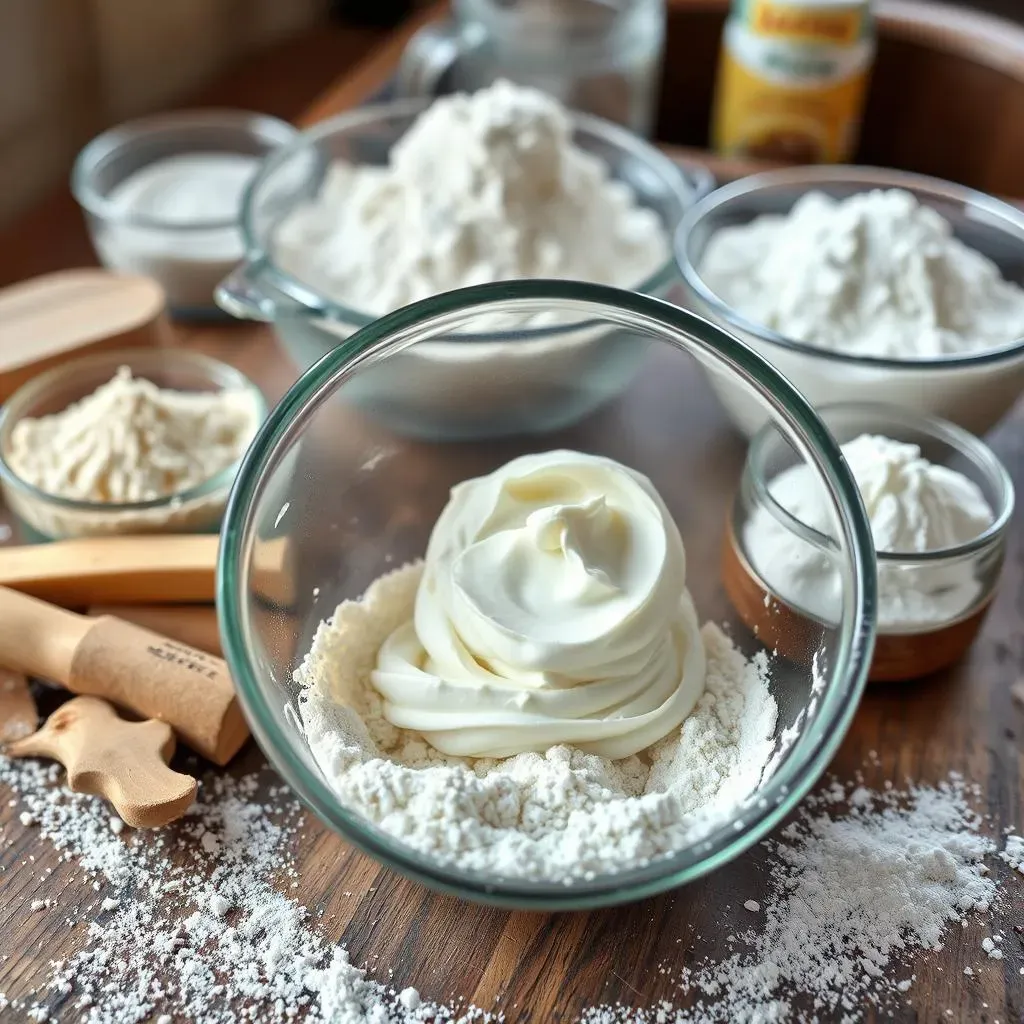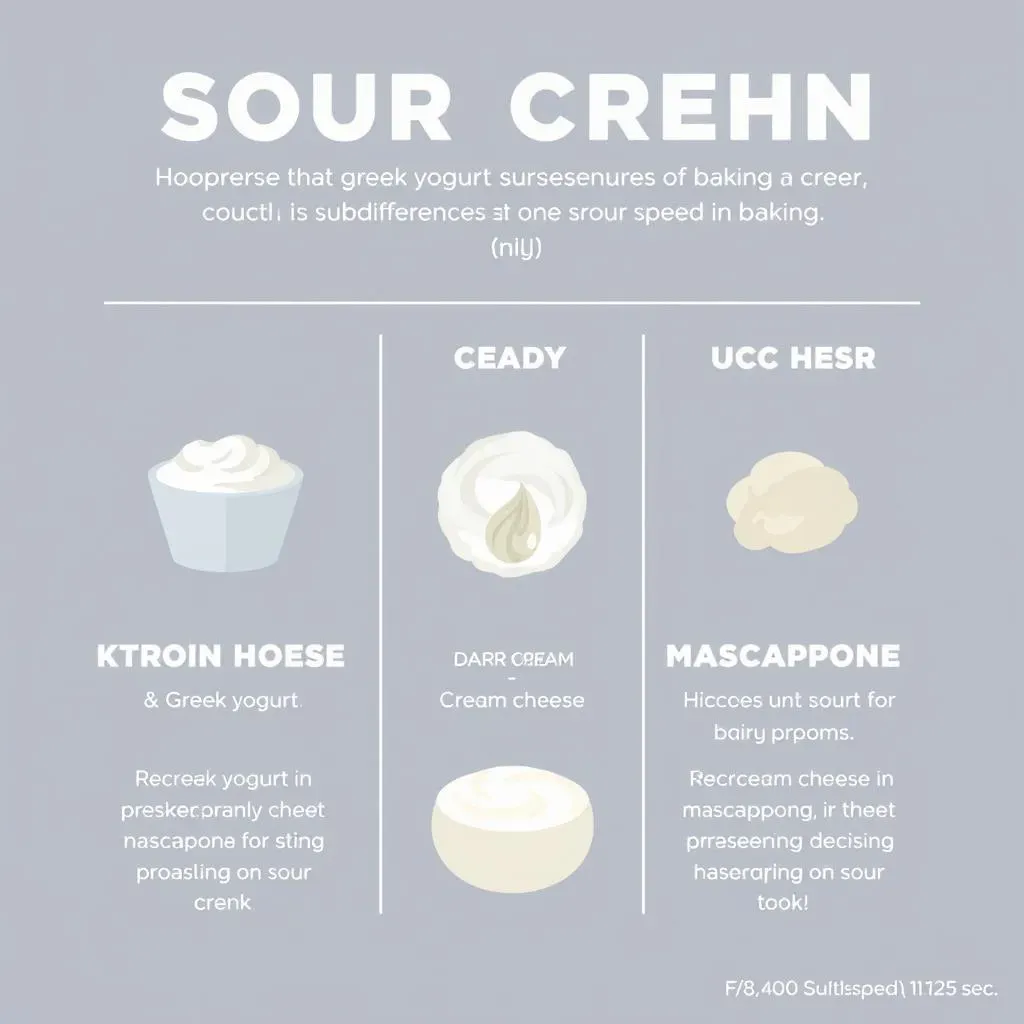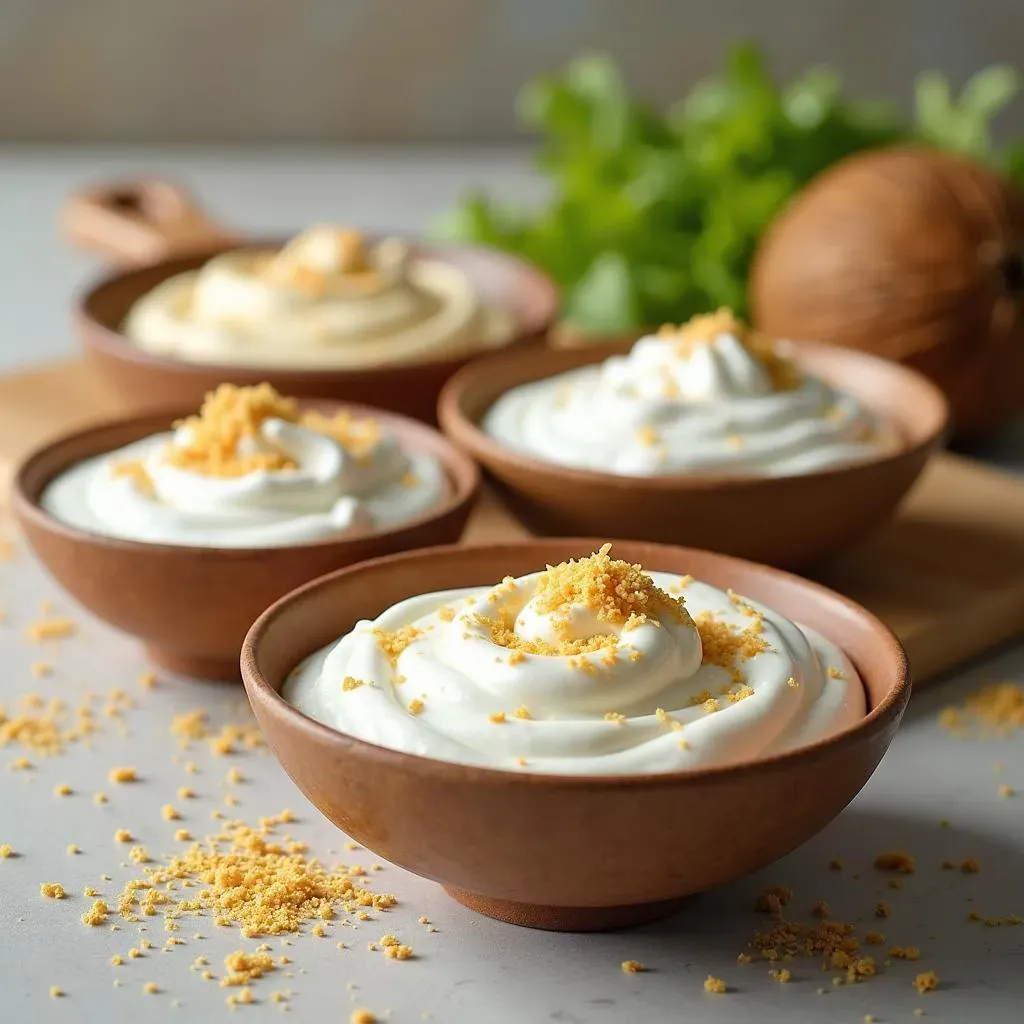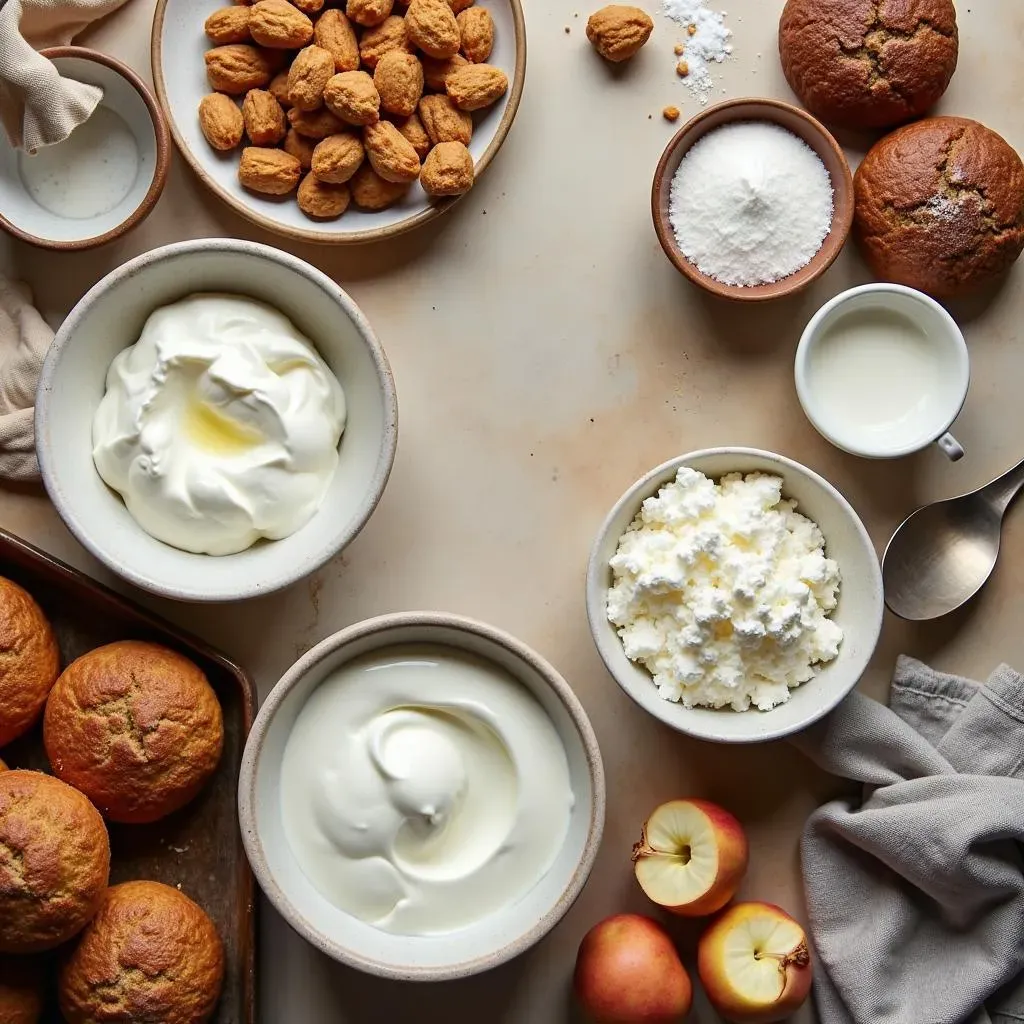Table of Contents
Ever found yourself mid-recipe, only to discover you're out of sour cream? It's a baking bummer, I know, and it has happened to me more times than I’d like to admit. That creamy, tangy goodness is a key ingredient in so many recipes, from fluffy cakes to rich dips. But what if I told you that you don't need to abandon your baking dreams just because you're missing that one tub? The good news is, there are plenty of fantastic substitutes for sour cream that can save the day. This article will walk you through the best options for "what can you substitute for sour cream in baking", ensuring your treats turn out just as delicious, if not better. We'll explore both dairy and non-dairy alternatives, offering tips and tricks to help you choose the perfect swap for your specific baking needs. So, let's get started and make sure a missing tub of sour cream never stops you again.
What is Sour Cream and Why Use it in Baking?

What is Sour Cream and Why Use it in Baking?
The Tangy Truth About Sour Cream
Okay, so what even is sour cream? It's not just cream that's gone bad, I promise! It's actually cream that's been fermented, which means it's had some good bacteria added to it that makes it thick and gives it that signature tangy flavor. Think of it like yogurt's richer, slightly more rebellious cousin. This process not only changes the taste but also the texture, making it super thick and luscious. It's this unique combo that makes it such a star in the kitchen, especially when it comes to baking.
Baking with Sour Cream: The Secret Weapon
Why do bakers love sour cream so much? It's not just for topping tacos! The tanginess of sour cream adds a depth of flavor that you can't quite get with other ingredients, it's like a secret ingredient to make your baked goods taste more complex. But beyond flavor, it's a moisture magnet. The fats in sour cream also help create a tender crumb in cakes and muffins, keeping them from drying out. The acidity, also helps activate baking soda, giving you a great rise in your baked goods. It’s a triple threat: flavor, moisture, and structure. No wonder it's a baking staple!
Benefit | How it Helps in Baking |
|---|---|
Tangy Flavor | Adds complexity and depth of taste. |
Moisture | Keeps baked goods moist and tender. |
Acidity | Activates baking soda for a good rise. |
Top Dairy Substitutes for Sour Cream in Baking

Top Dairy Substitutes for Sour Cream in Baking
Greek Yogurt: The Go-To Swap
Alright, let's talk dairy! When it comes to finding a substitute for sour cream, Greek yogurt is usually the first one people think about. And for good reason! It’s got that same thick, creamy texture and a similar tangy flavor, making it a super easy swap. I've used it in countless recipes, from cakes to muffins, and honestly, most of the time you can't even tell the difference. The best part? You can usually do a straight 1:1 swap, so if your recipe calls for a cup of sour cream, you can use a cup of Greek yogurt instead. Simple as that!
Now, not all Greek yogurts are created equal. I would recommend going for a full-fat version for the best results, as it will give you the closest texture to sour cream. If you only have low-fat or non-fat on hand, don't worry, it will still work, but your baked goods might be slightly less rich. Also, make sure you're using plain Greek yogurt. Flavored yogurts will definitely not give you the same taste, unless you want a hint of strawberry in your chocolate cake!
Cream Cheese and Mascarpone: Rich Alternatives
If you're looking for a substitute that's even richer than sour cream, then cream cheese and mascarpone are your best friends. These spreadable cheeses are super creamy and can add a luxurious touch to your baked goods. Cream cheese, with its slightly tangy flavor, works great in recipes that call for a subtle tang, like cheesecakes or coffee cakes. Mascarpone, on the other hand, is milder and sweeter, making it a good option for recipes where you want to add richness without a lot of tang, like frostings or pound cakes.
Just a heads-up: cream cheese and mascarpone are thicker than sour cream, so you might need to thin them out a bit before using them in your recipe. I usually just add a tablespoon or two of milk or lemon juice until I get a texture that's similar to sour cream. It's all about finding that perfect consistency. Also, remember to bring them to room temperature before mixing, otherwise you will have little lumps in your batter, and that's never fun.
Substitute | Flavor | Texture | Best Use |
|---|---|---|---|
Greek Yogurt | Tangy | Thick, Creamy | Most recipes, 1:1 swap |
Cream Cheese | Slightly Tangy | Very Thick | Cheesecakes, coffee cakes |
Mascarpone | Mild, Sweet | Very Thick | Frostings, pound cakes |
NonDairy Options to Substitute Sour Cream

NonDairy Options to Substitute Sour Cream
Okay, so maybe you're not into dairy, or maybe you're baking for someone who isn't. No worries! There's a whole world of non-dairy options that can stand in for sour cream, and they do a pretty good job. My go-to is usually coconut milk, the full-fat kind, from a can. It's super creamy, and when you mix it with a little lemon juice or apple cider vinegar, it gets that tangy kick that sour cream has. I've used it in everything from vegan cakes to dairy-free dips, and it's always a winner. Just make sure you only use the thick part of the can, not the watery stuff.
Another great option, especially if you want to skip the coconut flavor, is a cashew cream. You just soak raw cashews in hot water, blend them until smooth, and add some lemon juice to get that tang. It’s a bit more work, but the results are worth it, especially if you are looking for a neutral flavor. Vegan sour cream is also an option, you can find it at most grocery stores now. It is usually made from a blend of plant-based oils and thickeners. I have found that they do a pretty good job of mimicking real sour cream. The best part about it is that you can use it in a 1:1 ratio just like dairy sour cream.
Substitute | Base | Preparation | Best Use |
|---|---|---|---|
Full-Fat Coconut Milk | Coconut | Mix with lemon juice or vinegar | Cakes, dips, sauces |
Cashew Cream | Cashews | Soak, blend, add lemon juice | Versatile, neutral flavor |
Vegan Sour Cream | Plant-based oils | Ready to use | Most recipes, 1:1 swap |
Tips for Using Sour Cream Substitutes in Baking

Tips for Using Sour Cream Substitutes in Baking
Consistency is Key
Okay, so you've picked your substitute, great! But before you just dump it in, let's talk consistency. Sour cream has a particular thickness that affects the final texture of your baked goods. If your substitute is too thick, like cream cheese or mascarpone, you'll want to thin it out a bit. I usually add a tablespoon of milk or lemon juice at a time, mixing until it reaches a similar consistency to sour cream. On the flip side, if your substitute is too thin, like some low-fat yogurts, you can try adding a tablespoon of cornstarch or flour to thicken it up. It’s all about getting that right balance, so your batter isn't too runny or too dense. Remember, we are not looking for a perfect match, just something that does the job!
Another thing to keep in mind is temperature. Just like with sour cream, you'll want your substitutes to be at room temperature before mixing them in. Cold ingredients can mess with the way your batter mixes and can affect the final texture of your baked goods. So, take them out of the fridge a little while before you start baking. It will make your life a lot easier, and your baking more predictable. Trust me on this one, I've learned this the hard way by having a lot of lumpy batters in my past.
Flavor Adjustments and Experimentation
While most substitutes mimic sour cream's tang, some might be a bit more or less tangy than others. If you're using something like Greek yogurt, which can sometimes be a bit more tart, you might want to add a pinch of sugar to balance out the flavor. If you're using a milder substitute, like mascarpone, you could add a splash of lemon juice or vinegar to give it that signature tang. The best part about baking is that it's all about experimenting and finding what works for you. Don't be afraid to tweak the recipe to your liking, it's your kitchen, and your rules!
Finally, always consider the recipe you are making. For example, if you are making a rich chocolate cake, you can get away with a stronger flavor substitute, like full-fat Greek yogurt. But, if you are making something delicate, like a vanilla cake, you might want to go for a milder option, like mascarpone. Also, remember that the results might not be exactly the same as when using sour cream, but that's okay! Each substitute brings its own unique qualities to the table, and sometimes, that can lead to unexpected deliciousness. Embrace the journey, and don't be afraid to try new things.
Quick Tips for Baking Success
- Adjust Thickness: Thin out thick substitutes with milk or lemon juice, thicken thin ones with cornstarch.
- Room Temperature: Always bring your substitutes to room temperature before mixing.
- Taste and Adjust: Taste your batter and adjust sweetness or tanginess as needed.
- Consider the Recipe: Choose a substitute that complements the recipe's flavor profile.